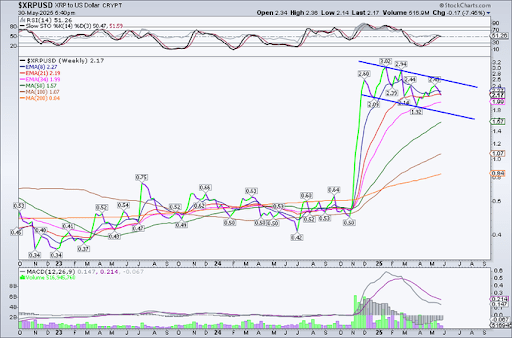Bitcoin ETFs See $9 Billion Inflows Amid Escalating Shift Away From Gold


Recent trends in the Bitcoin ETFs market reveal a significant shift in investor sentiment, with funds flowing into BTC exchange-traded funds while gold-backed funds experience notable outflows.
Bitcoin ETFs Emerge As Preferred Safe Haven
According to a Bloomberg report , US Bitcoin ETFs have attracted over $9 billion in inflows in the past five weeks, primarily driven by BlackRock Inc.’s iShares Bitcoin Trust ETF (IBIT). In contrast, gold-backed funds have seen outflows exceeding $2.8 billion during the same time frame.
This divergence in investor behavior comes as easing trade tensions have diminished demand for traditional safe havens like gold. Meanwhile, Bitcoin is increasingly being recognized as a viable alternative store of value amid growing concerns about US fiscal stability.
Furthermore, the market’s leading cryptocurrency reached a record high of $111,980, buoyed by favorable regulatory developments and rising macroeconomic uncertainty.
Although gold remains up more than 25% this year, it has retreated from its recent peaks, currently trading approximately $190 below its all-time high.
BTC’s Advantages Over Gold
Analysts suggest that this rotation towards Bitcoin ETFs indicates a growing acceptance of the cryptocurrency as a legitimate hedge within investment portfolios.
Christopher Wood, global equity strategist at Jefferies, expressed optimism for both gold and Bitcoin, noting their effectiveness as hedges against currency debasement in the G7 nations.
However, skeptics argue that Bitcoin’s notorious volatility still undermines its position as a true safe haven. Historical instances of macroeconomic shocks have shown Bitcoin falling sharply alongside other risk assets. Yet, some experts believe that Bitcoin’s decentralized nature gives it an advantage over gold in times of financial system risks.
Geoff Kendrick, global head of digital assets research at Standard Chartered, highlighted Bitcoin’s dual role as a hedge against both private sector risks, such as the collapse of Silicon Valley Bank in 2023, and government-related concerns, including the stability of the US Treasury.
Kendrick pointed out that recent threats to Federal Reserve (Fed) independence, alongside tariff escalations and broader concerns about US policy credibility, further bolster Bitcoin’s appeal.
In addition to these factors, Bitcoin appears to be shedding its previous reputation as merely a tech-adjacent risk asset. Dilin Wu, a research strategist at Pepperstone, noted that Bitcoin’s intraday correlation with major indices like the Nasdaq , as well as with the dollar and gold, has significantly decreased.
The backdrop of growing fiscal strain has intensified the discourse surrounding these assets. Moody’s recently downgraded the US from its last triple-A credit rating, citing concerns over ballooning deficits and national debt.
This downgrade aligns the US with other ratings agencies, including Fitch and S&P Global, which already rate the country below the top tier.
Despite the recent surge in Bitcoin’s popularity, gold continues to outperform on a year-to-date basis, boasting gains of about 25% compared to Bitcoin’s rise of approximately 15%.

Featured image from DALL-E, chart from TradingView.com

Pepe Makes It To Trump’s Feed—Is A Crypto Endorsement Next?
US President Donald Trump’s brief post on Truth Social on May 29 sparked a quick burst of excitement...

XRP Multi-Timeframe Breakdown: Here’s What Comes Next
XRP is once again under the spotlight as its price action shows signs of weakening across multiple t...

Can Dogecoin Price Still Rally 1,000%? Analyst Reveals End-Of-Year Prediction
A crypto analyst has forecasted a potential 1,000% rally for the Dogecoin price by the end of the ye...

